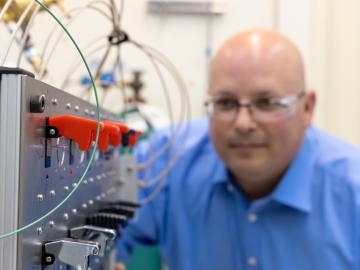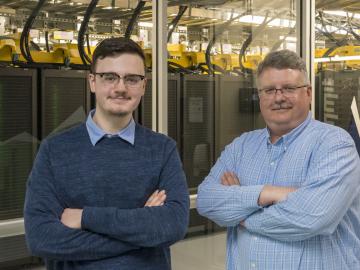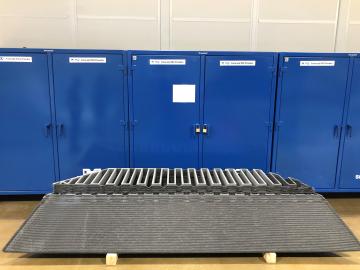
Filter News
Area of Research
News Type
News Topics
- (-) Composites (6)
- (-) Frontier (3)
- (-) Isotopes (6)
- (-) Materials Science (15)
- (-) Physics (1)
- (-) Summit (5)
- 3-D Printing/Advanced Manufacturing (19)
- Advanced Reactors (1)
- Artificial Intelligence (3)
- Big Data (3)
- Bioenergy (4)
- Biology (9)
- Biomedical (4)
- Biotechnology (2)
- Buildings (8)
- Chemical Sciences (5)
- Clean Water (5)
- Computer Science (16)
- Coronavirus (7)
- Critical Materials (4)
- Cybersecurity (4)
- Energy Storage (14)
- Environment (16)
- Fusion (7)
- Grid (8)
- High-Performance Computing (10)
- ITER (3)
- Machine Learning (1)
- Materials (27)
- Mathematics (1)
- Microscopy (7)
- Nanotechnology (7)
- National Security (3)
- Neutron Science (10)
- Nuclear Energy (2)
- Polymers (4)
- Quantum Computing (4)
- Quantum Science (8)
- Security (1)
- Space Exploration (3)
- Statistics (1)
- Transportation (12)
Media Contacts

A research team at Oak Ridge National Laboratory have 3D printed a thermal protection shield, or TPS, for a capsule that will launch with the Cygnus cargo spacecraft as part of the supply mission to the International Space Station.

Oak Ridge National Laboratory researchers have developed a new catalyst for converting ethanol into C3+ olefins – the chemical

An Oak Ridge National Laboratory researcher has invented a version of an isotope-separating device that can withstand extreme environments, including radiation and chemical solvents.

ASM International recently elected three researchers from ORNL as 2021 fellows. Selected were Beth Armstrong and Govindarajan Muralidharan, both from ORNL’s Material Sciences and Technology Division, and Andrew Payzant from the Neutron Scattering Division.

Scientists at ORNL and the University of Tennessee, Knoxville, have found a way to simultaneously increase the strength and ductility of an alloy by introducing tiny precipitates into its matrix and tuning their size and spacing.

Scientists at Oak Ridge National Laboratory have developed a solvent that results in a more environmentally friendly process to recover valuable materials from used lithium-ion batteries, supports a stable domestic supply chain for new batteries

The Department of Energy’s Office of Science has selected five Oak Ridge National Laboratory scientists for Early Career Research Program awards.

L&N STEM Academy senior Tyler Duckworth has been named recipient of the 2021 UT-Battelle Scholarship to attend the University of Tennessee.

Oak Ridge National Laboratory researchers, in collaboration with Cincinnati Inc., demonstrated the potential for using multimaterials and recycled composites in large-scale applications by 3D printing a mold that replicated a single facet of a

The Department of Energy’s Oak Ridge National Laboratory has licensed its award-winning artificial intelligence software system, the Multinode Evolutionary Neural Networks for Deep Learning, to General Motors for use in vehicle technology and design.


